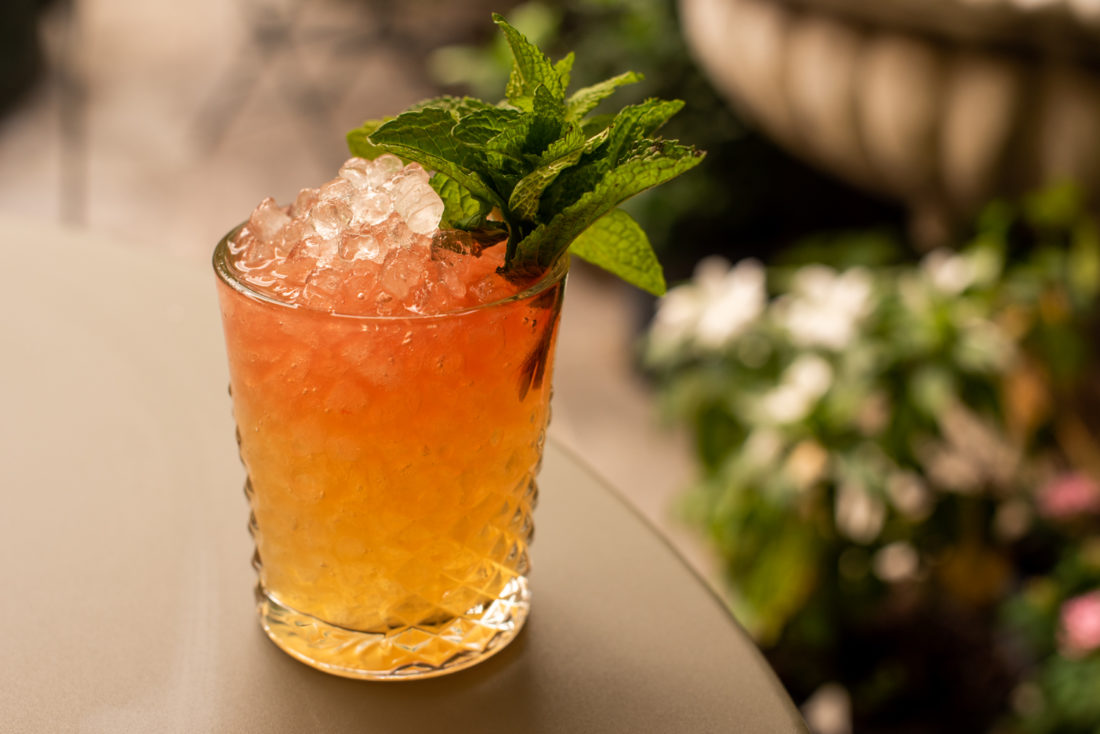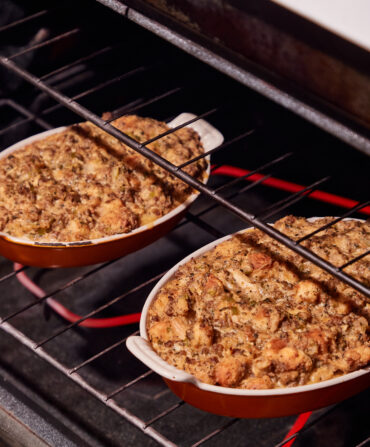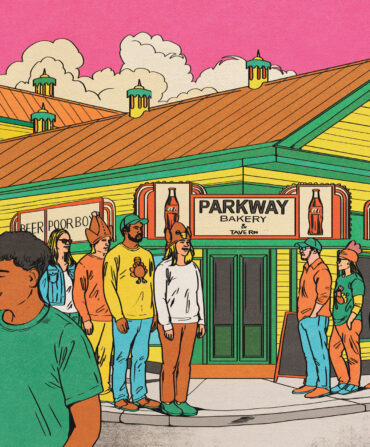“There is no singular person who has had more influence in shaping cocktails in New Orleans than Antoine Peychaud,” says Neal Bodenheimer, a co-owner and founder of three of the city’s most respected dining and drinking spots.
I gaze around the apothecary and cocktail pioneer’s former residence at 727 Toulouse Street. What would have been his street-level entertaining space in the 1830s is now the French Quarter’s newest cocktail bar, aptly named Peychaud’s. A marble fireplace holds a globe and a stack of worn, vintage books. Framed portraits and pencil sketches bear scattered water stains—romantic signs of age. A dove-gray banquette curves by the front window, and the long bar stretches to the back, where a charming courtyard awaits, with brick walls, tropical foliage, and a central, large, black antique fountain.
You can find myriad ways to connect to Antoine Amédée Peychaud’s legacy in New Orleans: The Sazerac House cocktail museum on Magazine Street dedicates a tour to him and his family recipe for bitters, and visitors can try small-batch versions of the formula. The New Orleans Pharmacy Museum on Chartres also highlights him in tours illuminating alcohol’s first uses as medicine. Yet, there’s nothing like having a cocktail in his home, where you almost expect him to arrive by carriage at any moment.
That dreamy connection was what convinced a hesitant Bodenheimer to come on as manager of the space, which opened quietly last month. Bodenheimer’s own legacy in town includes co-owning the James Beard Award–winning Cure, one of the nation’s most lauded cocktail bars; Cane & Table, a rum-focused bar and restaurant; and Vals, a Mexican street food space in a converted gas station on Freret Street.
“I was absolutely not planning on opening another French Quarter bar during the pandemic,” Bodenheimer says with a laugh. But when Chris Dawson and Talbott Ottinger—the owners of the Hotel Maison de Ville, which occupies the rest of the house—brought him down to look at the space at 727 Toulouse, Bodenheimer had a hunch about the address, and immediately contacted the New Orleans Historic Collection. “I started looking into the history and realized this was his house!” Bodenheimer recalls. “I couldn’t pass it up. It was just such a unique opportunity to honor Peychaud’s legacy.”
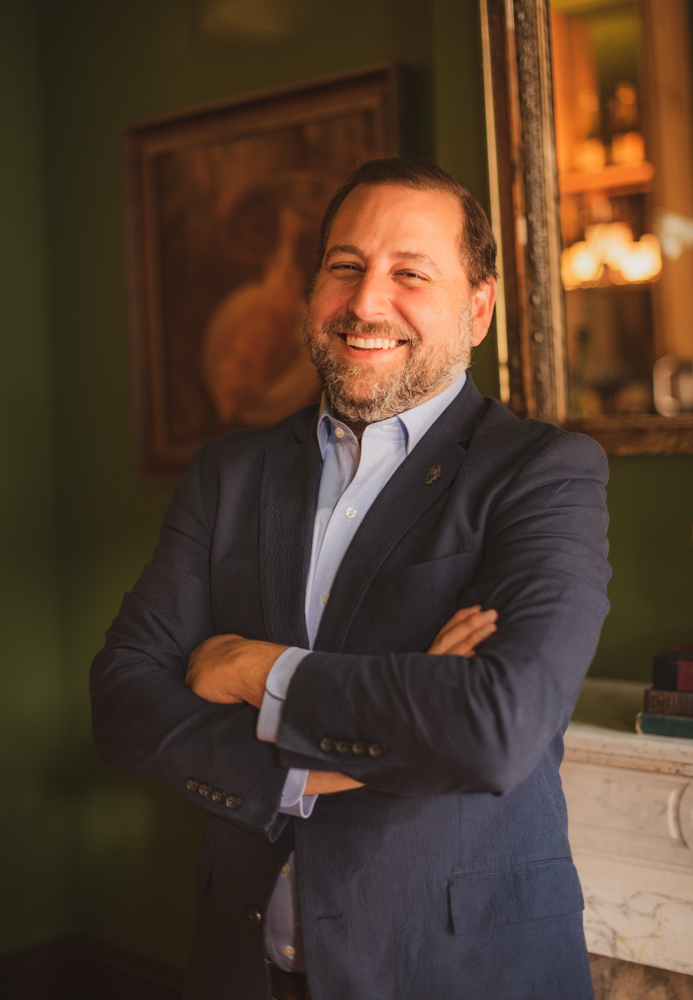
That legacy is largely due to his namesake bitters, and you’d be hard-pressed to walk into any cocktail bar in the entire world and not find a bottle. The potent bitters grace dozens of classic cocktails and literally thousands of modern ones. Originally, they were medicinal, brought by Peychaud to New Orleans as he (along with thousands of others) fled the slave revolts in Saint-Domingue, on what is now Haiti. This mass migration deeply changed the fabric of the Crescent City: The colorful Creole cottages, iconic foodways, Second Line parade traditions, and famous wrought-iron balconies all developed thanks to the influx of Haitians in these decades. The exact date of Peychaud’s arrival is unclear, but he did open his apothecary in 1832, at 437 Royal Street.
Purportedly, it was Peychaud and his friends who began splashing his bitters into a popular brandy of the day—Sazerac de Forge & Fils. This (again, purportedly) was the first cocktail ever created. As the decades wore on, the recipe morphed into a stable concoction of Sazerac rye whiskey, Peychaud’s bitters, a sugar cube, and a glass rinsed in absinthe. We now know this as the Sazerac—the official drink of New Orleans.
It’s a little hot out for a Sazerac. I order a Peychaud’s Fizz, a citrus peel–infused Peychaud’s aperitivo with fresh lemon, a touch of sugar, strawberry, cucumber, and soda. It arrives tall, bright-pink, with bubbles cracking off the ice. The herbaceous first sip kicks the New Orleans humidity right in the kisser.
The entire drinks menu here—created by Nick Jarrett, who you will likely find working behind the bar—focuses on the classics. Jarrett’s skills are evident in the Ramos Gin Fizz, his Pimm’s Cup, and a French 75 version, which reside on the list alongside lesser-known classics such as the Roffignac and the Ojen cocktail. “I think in New Orleans, we are all preservationists at heart,” Bodenheimer says. “We preserve drinking culture down here, and while we didn’t invent these recipes, as a city, we’ve adopted them and made them our own.”
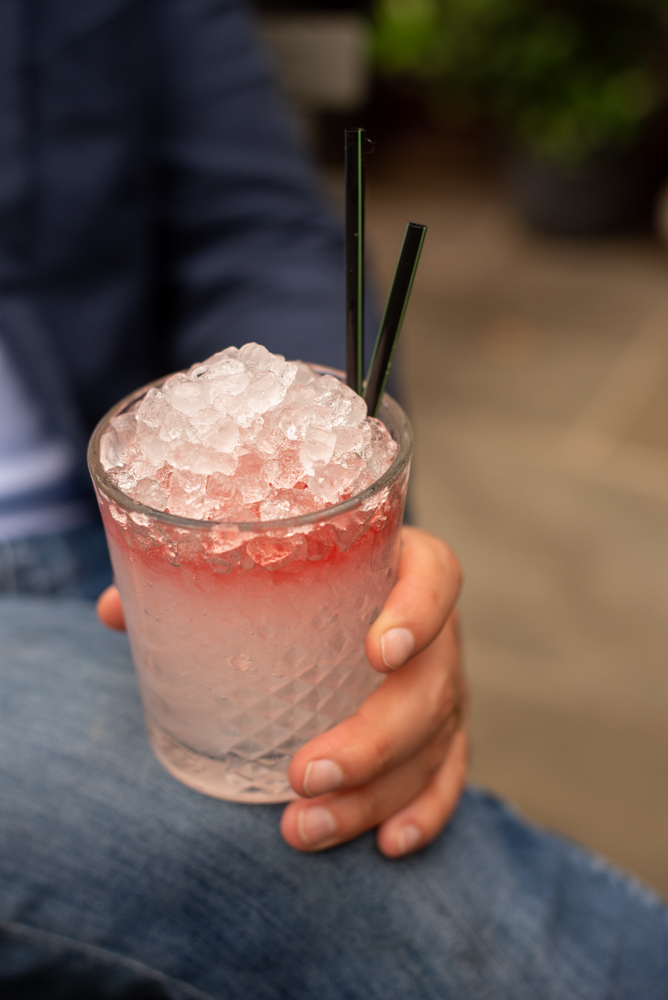
The same could be said of Peychaud’s former home, adopted by some of the best cocktail talent in the city. His legacy is not only further protected, but offered up in a new, visceral way, and, as I sip my Fizz, I look around, half eager for a ghost encounter.
“It’s something I never expected to feel,” Bodenheimer says, joining me in the daydream. “Standing in here the first time, I had this realization that Peychaud not only lived here, but he would have used this front door. He would have walked to work at his apothecary, just a few blocks away. He was just a man, but he changed so much.”
Want More?
The Sazerac House—an interactive cocktail museum and distillery, where you can taste and learn about both Sazerac whiskey and Peychaud’s bitters—dedicates an entire floor to Antoine Peychaud and his famous formula, as well as to cocktails at the turn of the twentieth century.


